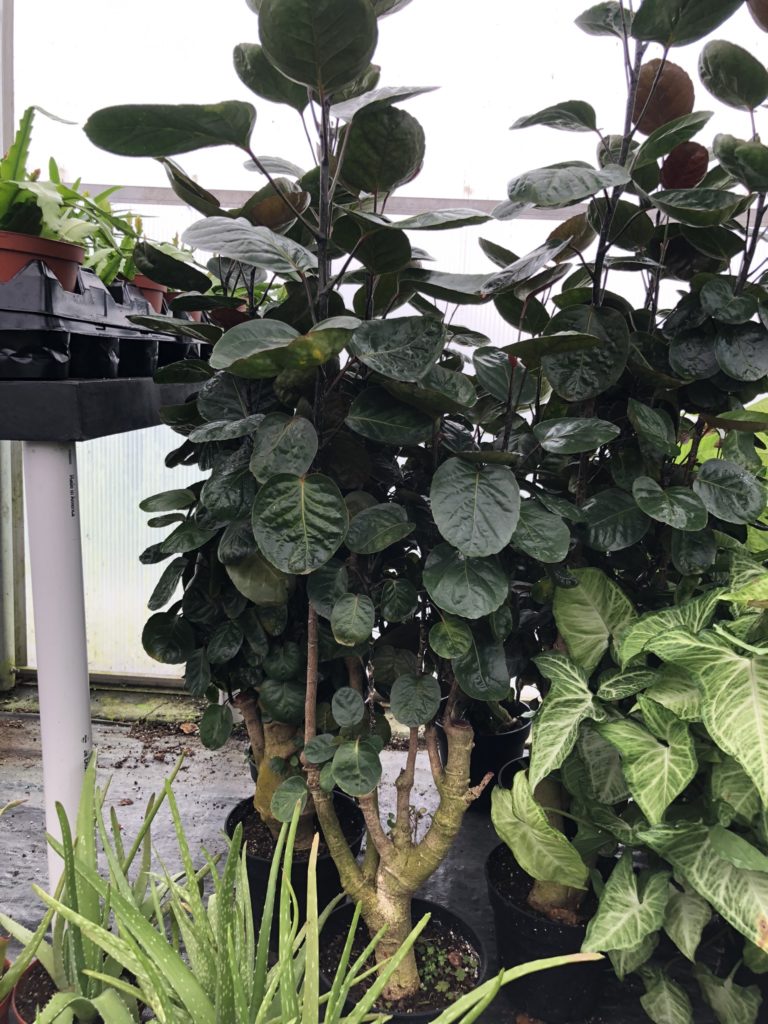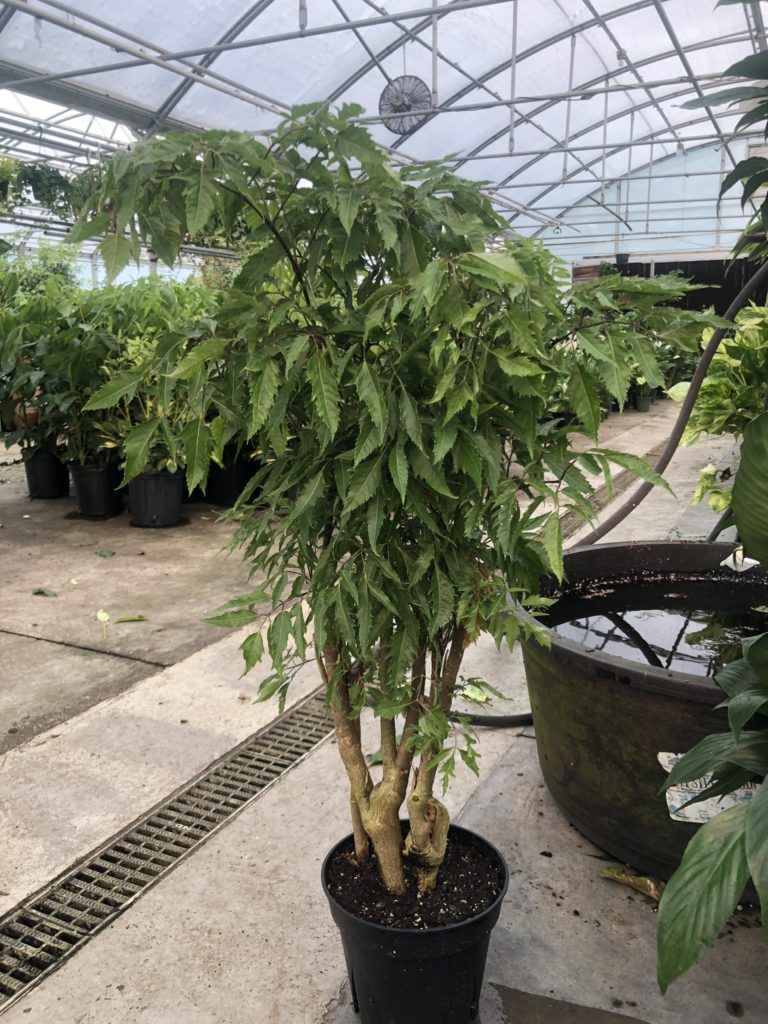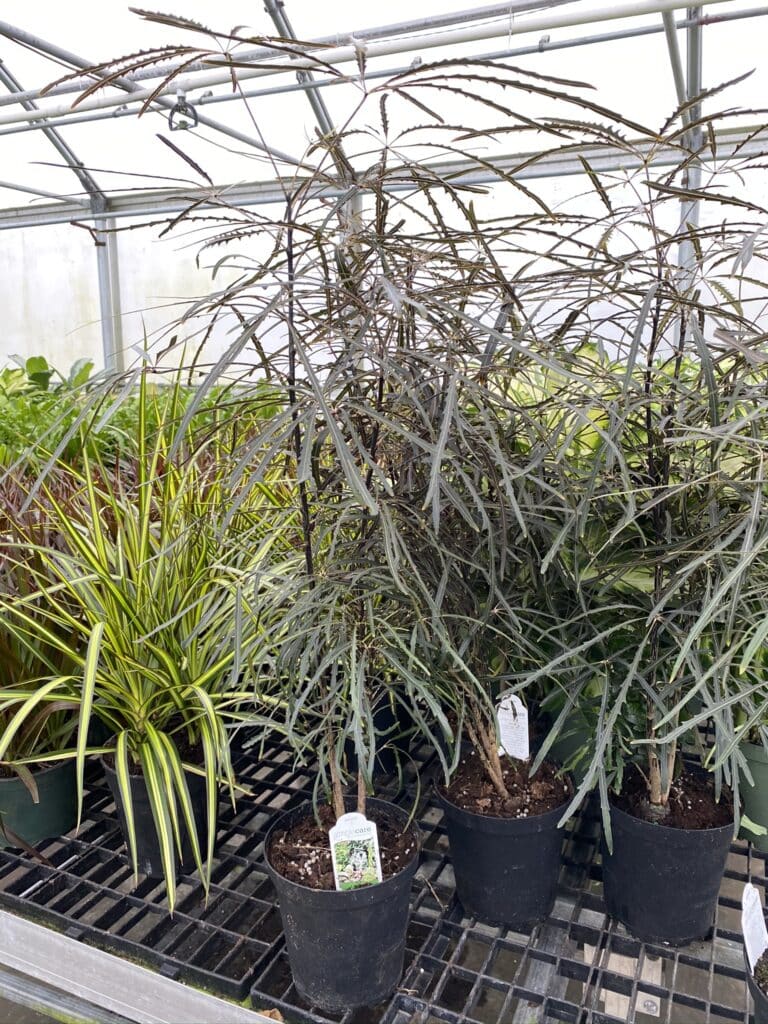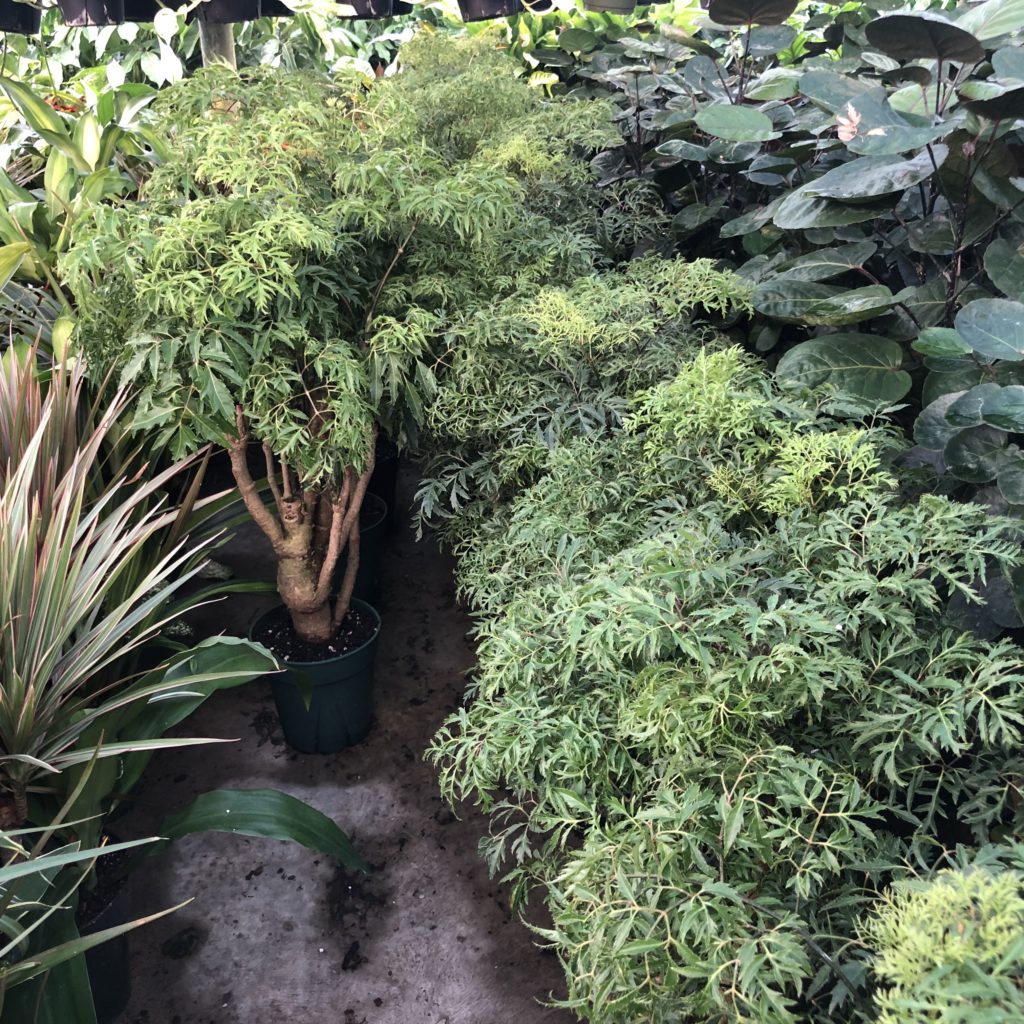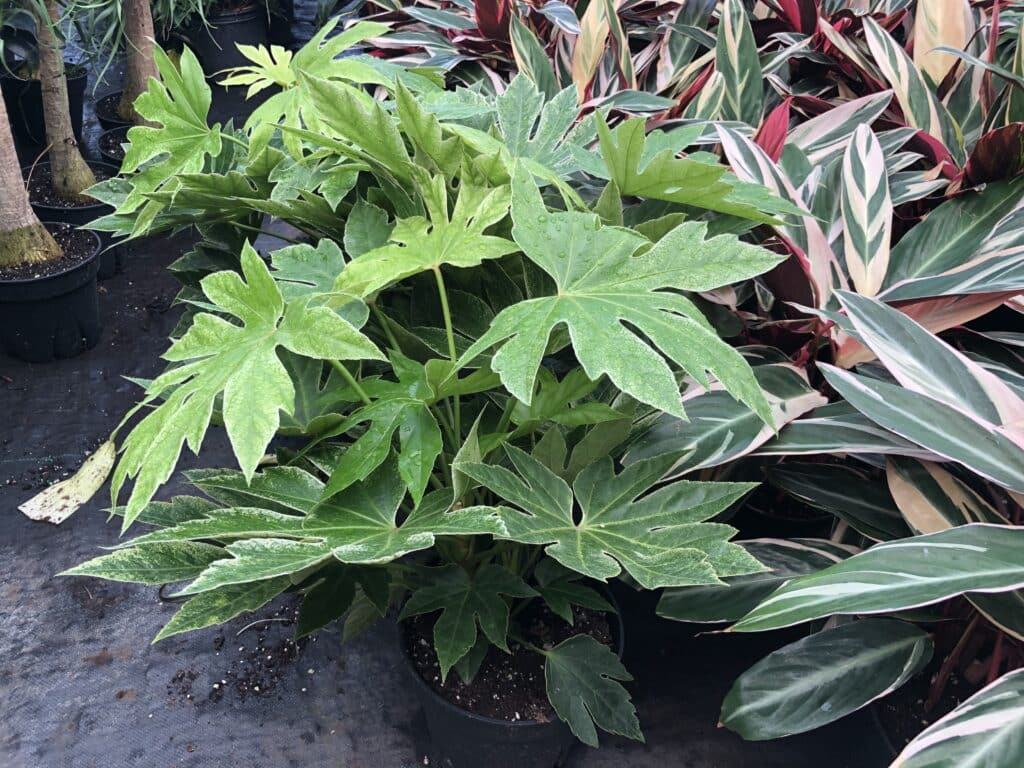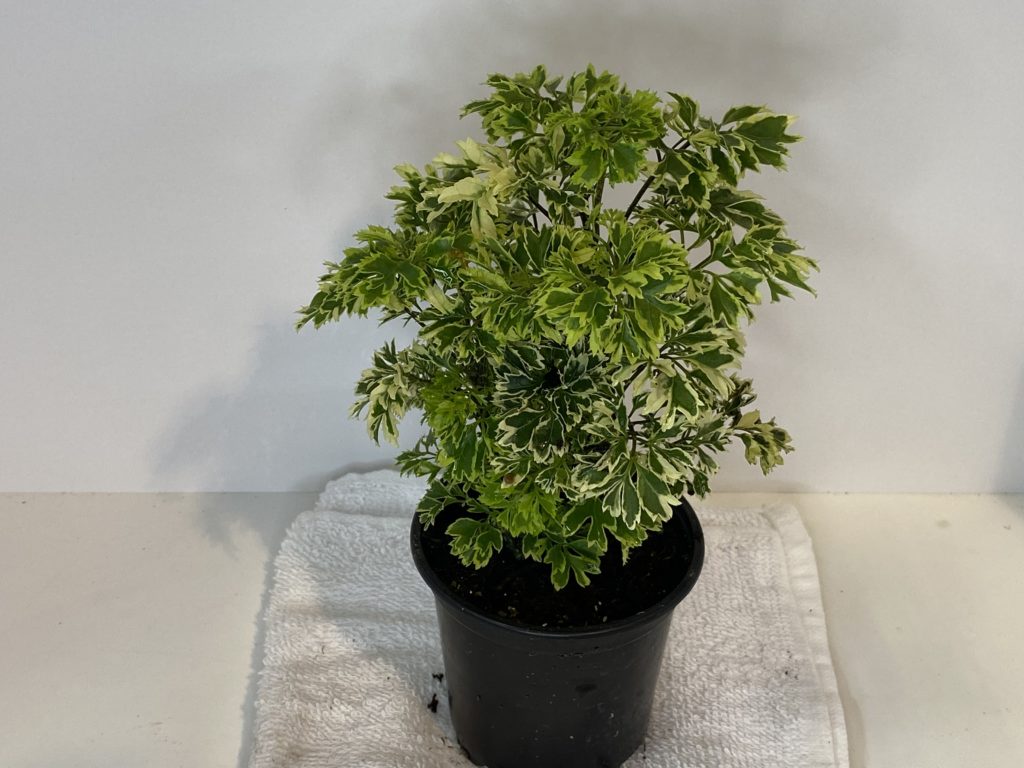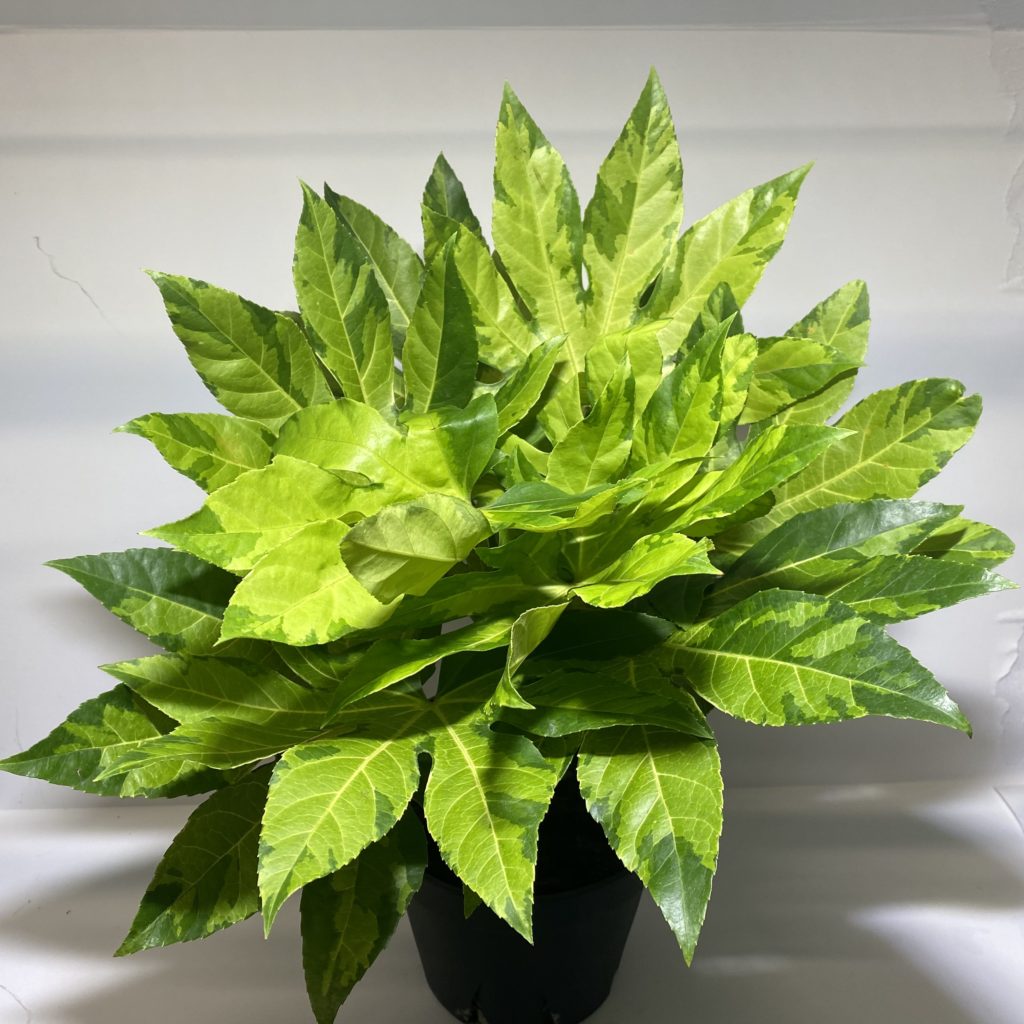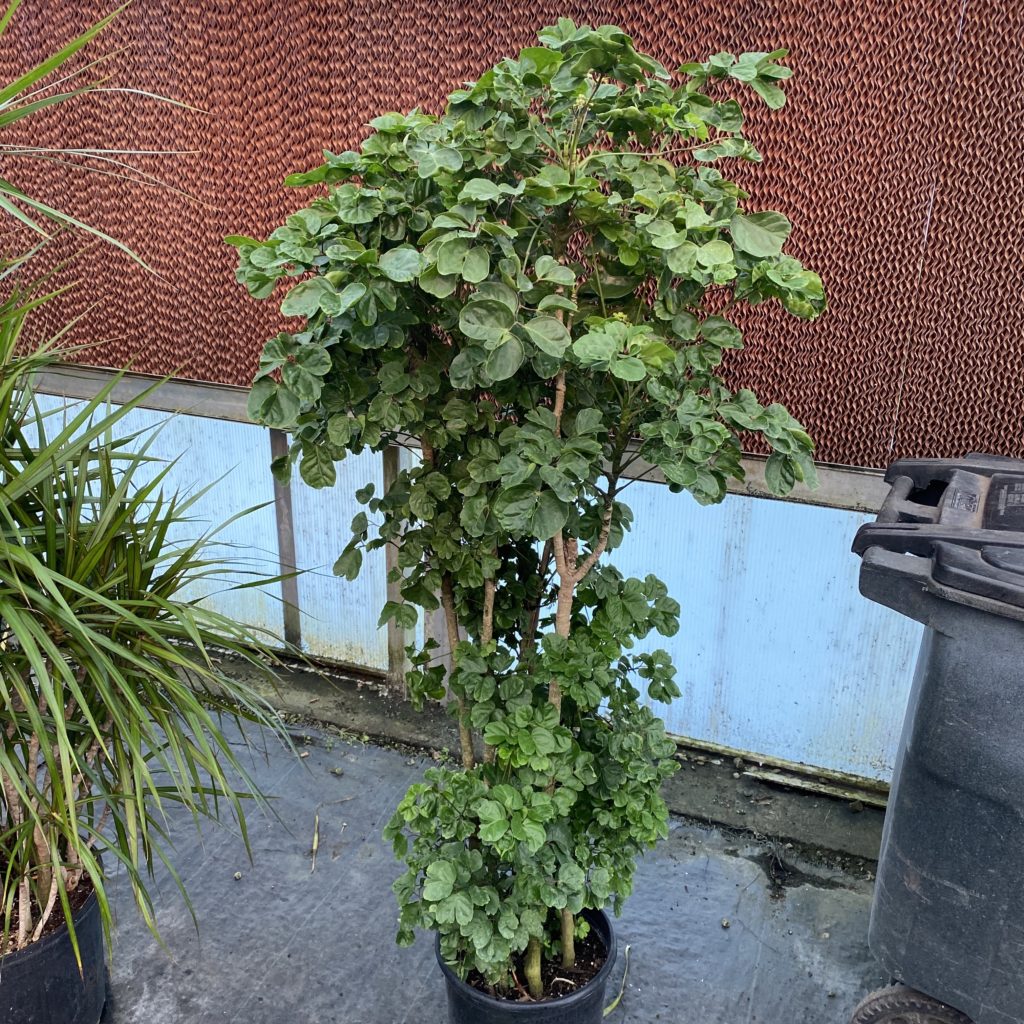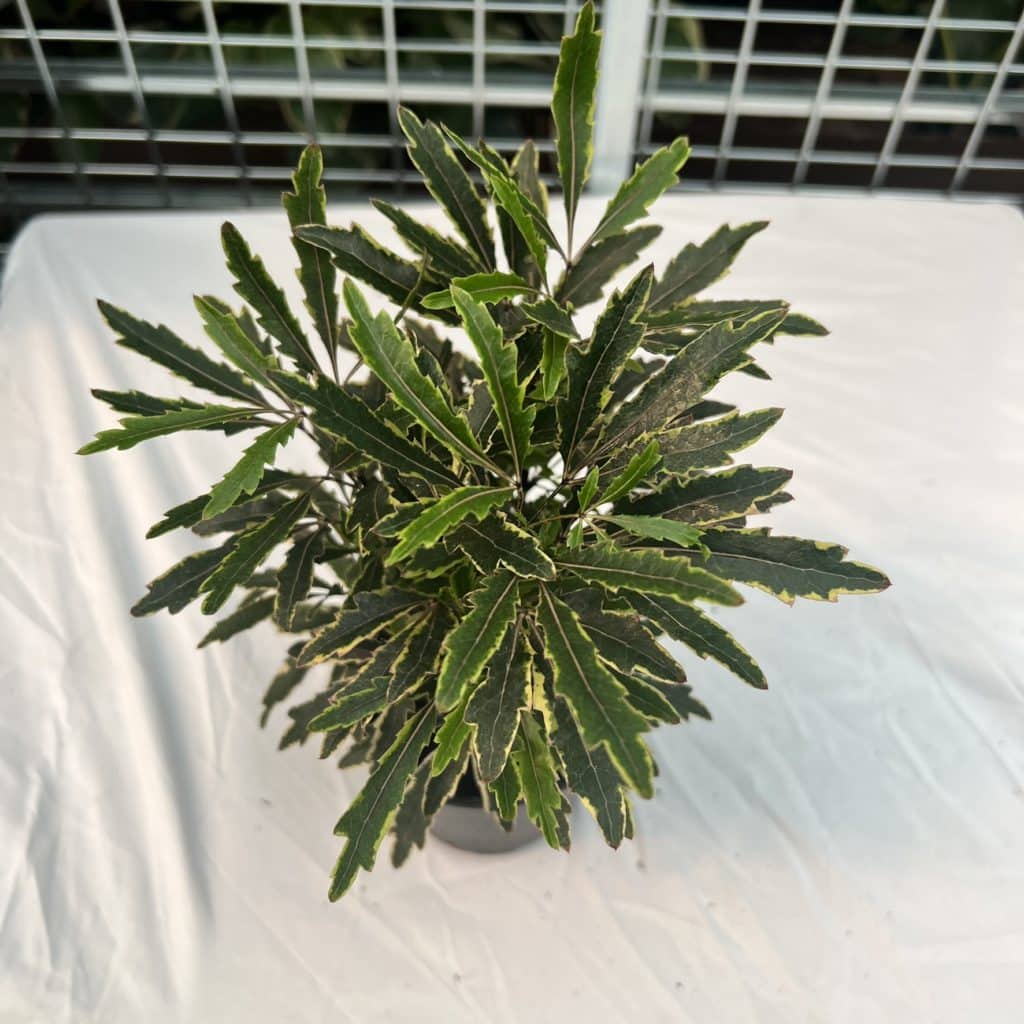Aralia could be referring to one of many plants from the evergreen plant family which is native to Africa, Asia, Australia, parts of North and Central America, and South America.
There are quite a few different Aralia plants, some of the common ones we carry are listed below.
Balfour Aralia
The distinct leaves of a Balfour Aralia resemble leathery, round, dinner plates about 1″- 2″ in diameter, which is how the plant got its nickname, the Dinner Plate Aralia. The leaves can range in color from light green to dark green and some varieties have green and cream colored variegated leaves. Aralias are not good houseplants for beginners since they are easy to over- water which results in root rot and leaves falling off.
Balfour Aralia plants do best in bright indirect light; but will survive in low light if you are careful not to over-water.
Aralias have very fine roots and are easily over-watered. Always allow the top 1/2 of the soil in the pot to dry out before watering. During the winter when plants are resting, they need even less water. In low light situations, Aralias may need water only once a month.
Balfour Aralias like basic household temperatures between 65-80 degrees.
Aralia plants attract numerous house Plant Pests such as mealybugs, scale, spider mites, and Aphids. Spraying the plant with a biodegradable soap and water mixture on a regular basis helps prevent Plant Pest infestations.
Root-rot, caused by over-watering, is the main plant disease affecting Aralia plants
Ming Aralia
Aralia plants can survive in low light conditions, but grow faster and produce more leaves in medium to bright indirect light.
Too much water, resulting in root rot, is the main reason aralia plants die. Allow the top 50% of the soil to dry out before watering. In low light conditions, an aralia may need water as little as every 2-3 weeks.
Aralia plants prefer temperatures between 60°-85° F (15.6°-29.4°).
Fatsia Aralia
The fatsia japonica plant, or Japanese aralia, originated in the sub-tropic forests of Japan, Korea, & Taiwan. Fatsia plants are a type of evergreen plant that can be grown both indoors as a houseplant and outdoors in frost-free areas. A fatsia plant has shiny, leathery, medium green palmate (hand-shaped) leaves that grow at the ends of stiff stems. Fatsia plants are compact upright plants that can grow up to 6ft. tall even indoors. Prune a fatsia aggressively to help keep the growth under control and the shape attractive.
A fatsia does well in bright filtered light. If you move it outdoors in the spring and summer, be sure to keep it in the shade.
A Fatsia likes cool temperatures, especially in the winter when it is resting. It does well in temperatures between 45°-55°F (7.2°C-12.8°C) in the winter and never above 70°F (21.1C) during the rest of the year.
Fatsia plants attract spider mites, Mealy Bugs, scale, and Aphids.
Since this plant likes medium to high humidity, powdery mildew may develop on the leaves. Provide good air circulation and try to keep the leaves dry.
False Aralia
A schefflera elegantissima, native to New Caledonia, has many different names depending who you ask: false aralia, dizygothica elegantissima, spider aralia. Whatever you call it, this is a beautiful plant with long, narrow, serrated leaves in a palmate (finger-like) arrangement. The color of the leaves starts out as a reddish, coppery green and gradually turns into a lovely dark green. The plant can be used as a table plant or as a 4-7ft floor plant as it matures.
Schefflera elegantissima likes bright indirect light, but no direct sun.
Keep the soil barely moist but never soggy. Water well, until the water comes out the drip holes in the bottom of the pot. Allow the top 1″-2″ of soil to dry out before watering again. Wilted leaves usually mean the plant is over-watered. The plant loses leaves if the soil is too wet or too dry. During the winter, when the plat is resting, allow the soil to dry out more before watering.
Warm temperatures between 65-85°F (18-29°C). If the temperature dips below 60°F (15.6°C) a false aralia may drop leaves.
Moderate to high humidity. If the air is too dry, a false aralia loses leaves.
False Aralias are prone to spider mites, scale, mealybugs, Aphids
